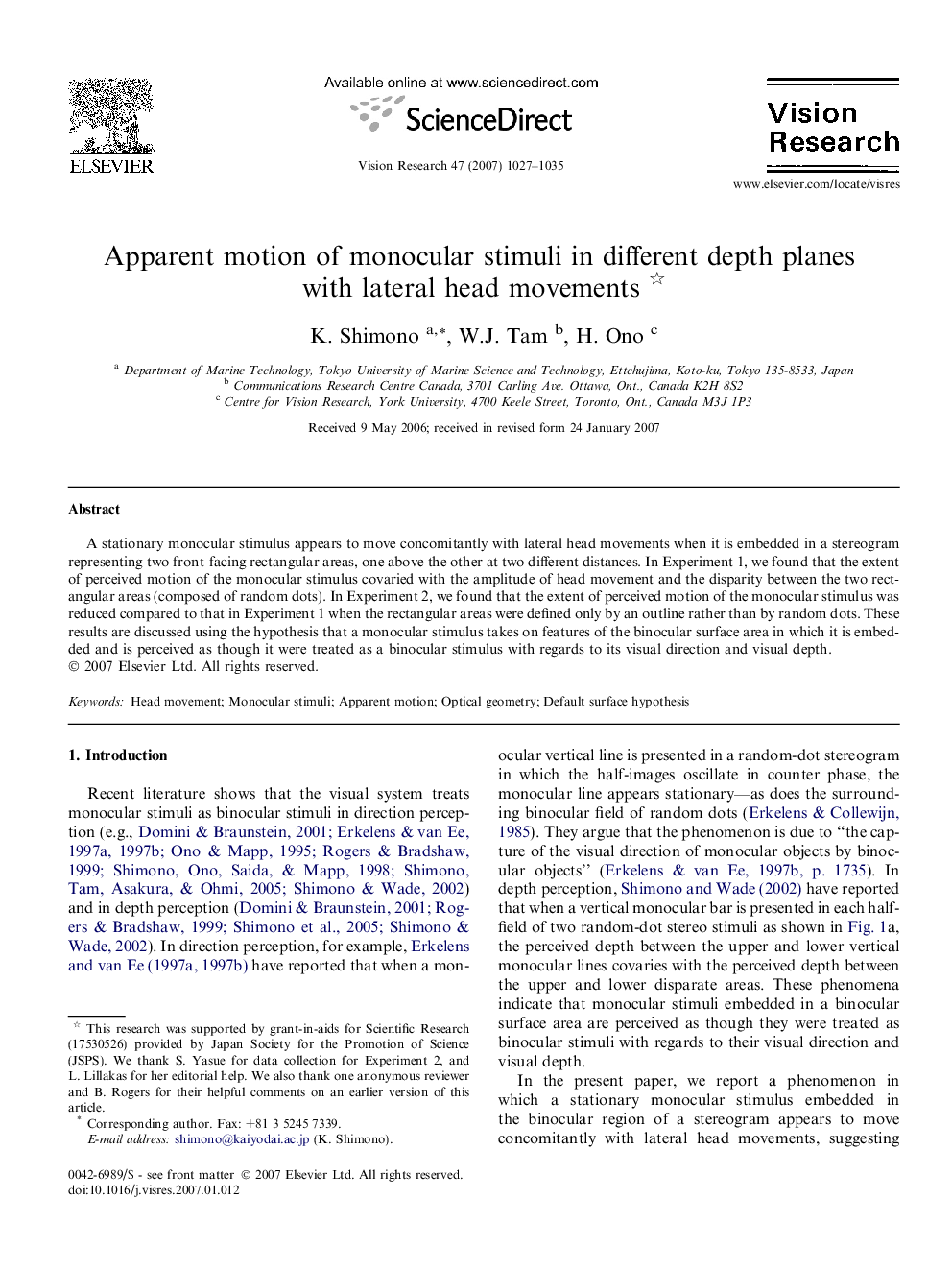| Article ID | Journal | Published Year | Pages | File Type |
|---|---|---|---|---|
| 4036391 | Vision Research | 2007 | 9 Pages |
A stationary monocular stimulus appears to move concomitantly with lateral head movements when it is embedded in a stereogram representing two front-facing rectangular areas, one above the other at two different distances. In Experiment 1, we found that the extent of perceived motion of the monocular stimulus covaried with the amplitude of head movement and the disparity between the two rectangular areas (composed of random dots). In Experiment 2, we found that the extent of perceived motion of the monocular stimulus was reduced compared to that in Experiment 1 when the rectangular areas were defined only by an outline rather than by random dots. These results are discussed using the hypothesis that a monocular stimulus takes on features of the binocular surface area in which it is embedded and is perceived as though it were treated as a binocular stimulus with regards to its visual direction and visual depth.
